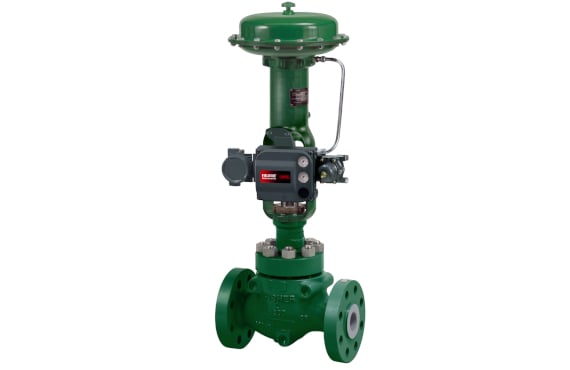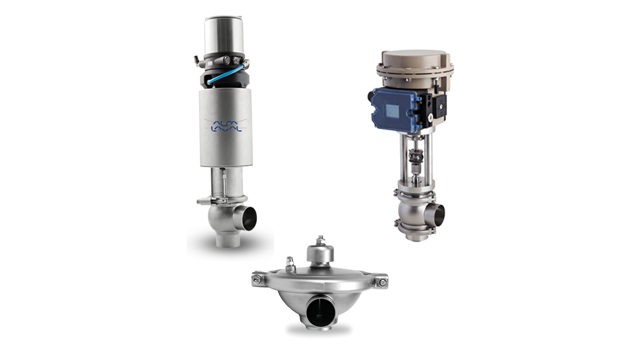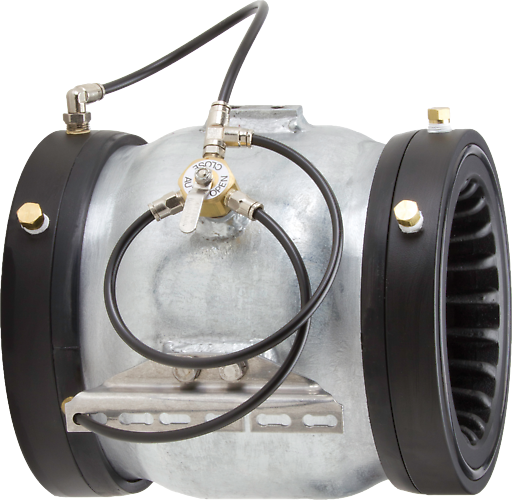Exploring the Functionality of Modern Control Valves in Industrial Applications
Exploring the Functionality of Modern Control Valves in Industrial Applications
Blog Article

Maximize Energy Cost Savings and Convenience With Advanced Building Automation Controls
In the world of modern design and facility monitoring, the assimilation of advanced building automation manages stands as a critical advancement. The merging of innovation and sustainability has birthed a brand-new era where power performance, convenience optimization, and functional streamlining are no more distant goals however achievable realities. By harnessing the power of automation, structures can adapt, respond, and advance in means that were as soon as unthinkable. The possibility for considerable power cost savings and boosted convenience is not just an opportunity however a promise waiting to be satisfied. This paradigm change in structure monitoring holds the key to unlocking a globe where environmental conscientiousness and owner health sympathetically coexist within the wall surfaces of our frameworks.
Energy Effectiveness Benefits
Energy performance benefits can considerably decrease energy usage and functional costs in buildings. By executing energy-efficient practices and technologies, building proprietors and drivers can attain considerable cost savings while also adding to ecological sustainability. Among the primary advantages of enhancing power performance in buildings is the reduction of utility bills. Energy-efficient systems, such as sophisticated structure automation controls, can enhance making use of sources like illumination, heating, and cooling, causing lower energy expenses with time.
Additionally, enhanced power effectiveness can prolong the life-span of building tools and systems. By running much more successfully, cooling and heating systems, lighting fixture, and other structure elements experience much less damage, causing reduced maintenance and replacement prices. Furthermore, energy-efficient buildings commonly command greater building values and rental prices, providing long-lasting economic benefits to proprietors.
Furthermore, energy performance can enhance owner comfort and efficiency. Properly controlled interior environments with optimum lighting and thermal problems develop a more helpful and enjoyable work space, resulting in boosted staff member satisfaction and performance. Generally, the power efficiency benefits related to innovative building automation controls are multifaceted, including expense financial savings, ecological stewardship, and occupant well-being.
Improved Comfort Control
Enhancing comfort control in structure atmospheres calls for an advanced assimilation of innovative automation systems for optimum resident well-being. By making use of innovative structure automation controls, centers can tailor the interior environment to satisfy the specific demands and choices of occupants. control valves.
Improved convenience control surpasses basic temperature level changes. It consists of attributes such as personalized setups, occupancy sensing units, and natural light utilization to develop a dynamic and responsive setting. By including these innovative controls, buildings can not only improve comfort yet also enhance power effectiveness by enhancing system procedures based on actual occupancy and usage patterns. Ultimately, prioritizing occupant convenience via innovative automation systems results in an extra satisfying and healthier indoor setting.
Operational Efficiency Improvements

Furthermore, the execution of real-time monitoring and analytics tools makes it possible for structure operators to determine energy ineffectiveness and functional abnormalities promptly. By constantly monitoring energy usage patterns and system performance metrics, adjustments can be made in real-time to enhance energy consumption and ensure peak operational performance. control valves. Furthermore, integrating need action approaches right into building automation controls can further enhance operational effectiveness by dynamically readjusting energy use based upon grid problems and rates signals
Indoor Climate Optimization
Reliable indoor climate optimization is a fundamental aspect of building automation controls, making sure passengers' convenience and health while maximizing power cost savings. By using sophisticated sensors and controls, building automation systems can continuously keep track of and change temperature level, moisture degrees, air high quality, and air flow to create an optimal interior atmosphere. Keeping comfy and regular problems not just enhances owner satisfaction but also improves efficiency and overall well-being.
Interior climate optimization likewise plays a vital role in check my source power performance. By fine-tuning air conditioning, ventilation, and home heating systems based upon real-time data and occupancy patterns, constructing automation controls can substantially decrease power usage - control valves. As an example, applying approaches such as demand-controlled ventilation and thermal zoning can aid reduce energy waste while making certain that each area of the structure receives the essential conditioning.

Sustainable Environment Creation
Structure automation manages not only maximize indoor environment conditions for energy efficiency and occupant convenience however also lay the foundation for developing a sustainable environment via calculated monitoring of systems and sources. By integrating advanced building automation modern technologies, such as sensors, actuators, and smart software application, facilities can monitor and readjust energy use in real-time to lessen waste and minimize their carbon footprint. These systems make it possible for predictive maintenance, determining potential page problems prior to they intensify and maximizing devices performance to boost long life and performance.
Furthermore, lasting environment production expands past energy administration to include water preservation, waste reduction, and interior air top quality enhancement. Building automation controls can regulate water usage, detect leakages, and ensure correct garbage disposal techniques, adding to total sustainability efforts. Furthermore, by keeping track of and regulating air flow and filtration systems, these innovations boost passenger wellness and productivity while reducing power consumption connected with a/c procedures.
Conclusion
To conclude, progressed structure automation check here controls offer considerable benefits in regards to power financial savings, comfort control, operational effectiveness, indoor environment optimization, and developing a lasting environment. By executing these controls, buildings can accomplish ideal efficiency while lowering power intake and improving resident convenience. It appears that using sophisticated automation technology is crucial in enhancing structure efficiency and developing a more lasting future.
Energy performance benefits can dramatically reduce energy intake and operational expenses in buildings. In general, the energy effectiveness benefits associated with sophisticated building automation controls are multifaceted, encompassing price financial savings, ecological stewardship, and passenger wellness.
Additionally, incorporating need reaction strategies right into building automation controls can better boost operational efficiency by dynamically changing energy use based on grid conditions and rates signals.
Building automation controls not just enhance indoor environment problems for power efficiency and owner comfort but likewise lay the structure for developing a lasting atmosphere via critical management of systems and sources.In conclusion, advanced structure automation controls deal significant advantages in terms of power cost savings, convenience control, operational performance, indoor environment optimization, and creating a lasting setting.
Report this page